Compare Exterior Shutter Materials
| Construction | |||
| Strength & Durability | |||
| Weather Resistance | |||
| Weight | |||
| Appearance | |||
| Finishes | |||
| Installation | |||
| Maintenance | |||
| Cost (ranking 1-6) | |||
| Production Time | |||
| Lifespan | |||
| Best Use | |||
| Styles | |||
| Arch Top Option | |||
Exterior shutter dogs are both a fundamental component of the proper function of outside shutters and an opportunity to personalize the presentation. This important piece of hardware is used extensively throughout the country and around the world to keep exterior shutters open in a locked position.
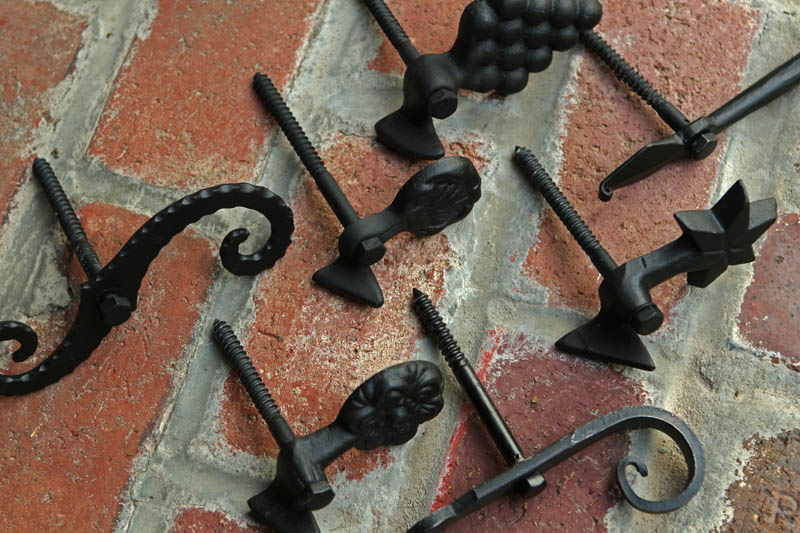
“Dog” is an Old English term defined as a “simple mechanical device for holding, gripping, or fastening.” Therefore, restraints that hold exterior shutters in place are commonly called shutter dogs. Alternative terms include shutter catch and shutter holdback. ShutterLand offers two functional outdoor materials; wood shutters and PVC shutters.
Shutter dogs, or tiebacks, consist of two primary components that work together. The principle element floats parallel to the window in front of an exterior shutter to keep it open. It revolves on a perpendicular supporting axle anchored to the facade of the house.
The exterior shutter dog is intentionally asymmetrical so it naturally rests in a vertical position. Installed just beneath the open shutter, the tieback autonomously restrains an outstretched panel, then rotates horizontally to permit the release of the window shutter to close over the opening. Various shapes, sizes, and weights contribute to the overall operation.
Some exterior shutter hinges, including Clarks Tip and Lull & Porter, self-lock when the shutters are ushered wide of the window. However, popular surface mount strap hinges are less dynamic, making exterior shutter dogs a vital accessory.
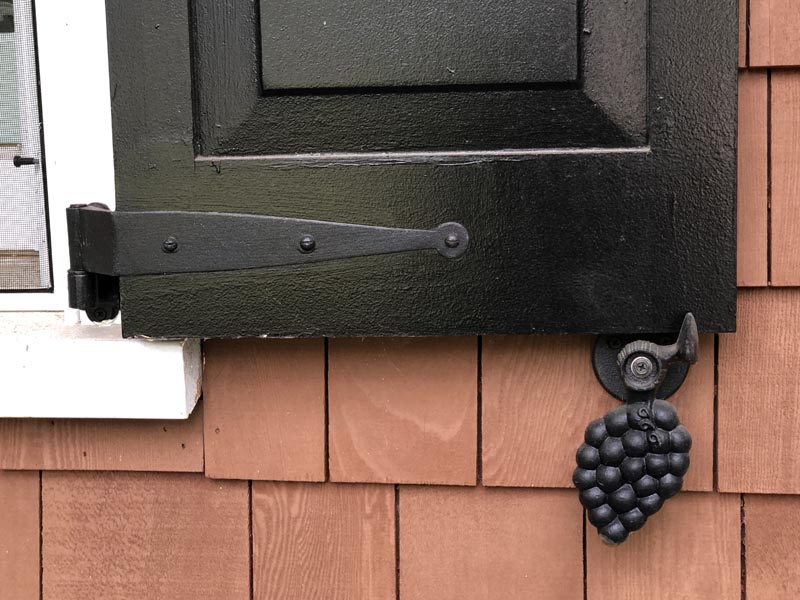
Exterior shutter dogs are sold in an array of designs and patterns. The S-shaped scroll is most commonly applied throughout the United States. Other styles are more prevalent in defined regions.
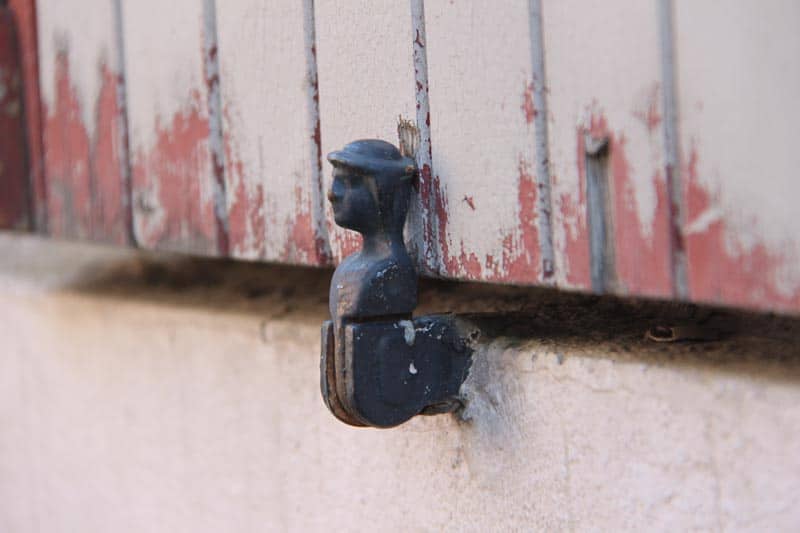
In the New England states, hand-forged cast iron designs are used for historic preservation. Paired with shutter horns and tails, the most authentic look can be achieved. Propeller-shaped and rat-tail colonial vintage shutter dogs are prominent along the Atlantic North-Eastern seaboard. Ornate flower, grape, or star forms enhance the character of both traditional and modern buildings in Maine, New Hampshire, Massachusetts, Rhode Island, Connecticut, New York, New Jersey, Delaware and Maryland. Dolphin, scallop, sea horse, or alligator-shaped tiebacks are frequently adopted on southern coastal or lakeside homes.
European shutter tiebacks are varied in design. Most are utilitarian with basic construction. Simplicity naturally commands the market with the vast number of exterior shutters. However, pockets within any region may opt to use more ornate and visually stimulating shutter tiebacks.
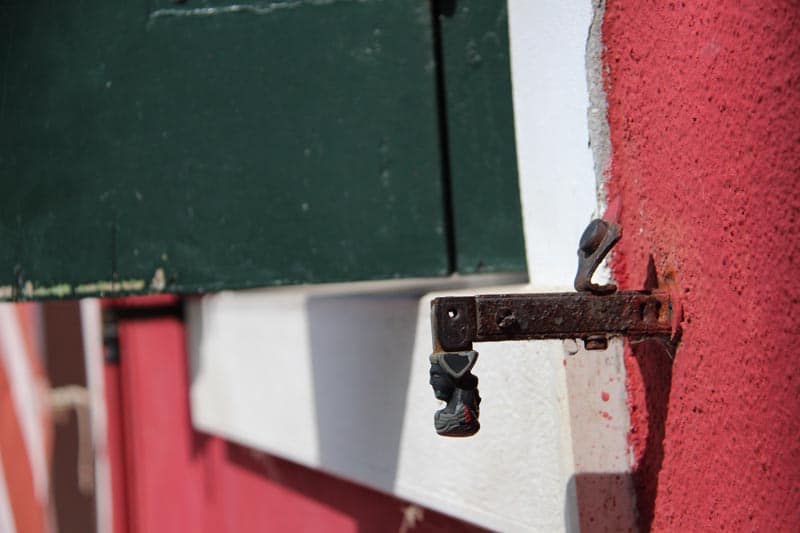
The most impressive antique shutter dogs feature a head, presumably the likeness of a noble lady or French king. But some tiebacks may merely feature typical civilians. In the up position, the tieback holds the exterior shutter open. Lift and drop the head forward to release the shutter to swing closed. The most intricate busts have faces when the shutter dog is seated both up and down. Shutter tiebacks complement board and batten shutters, solid panel shutters, and louvered shutters.
Purchase of European shutter dogs within the United States may be difficult. A search on eBay may prove fruitful.
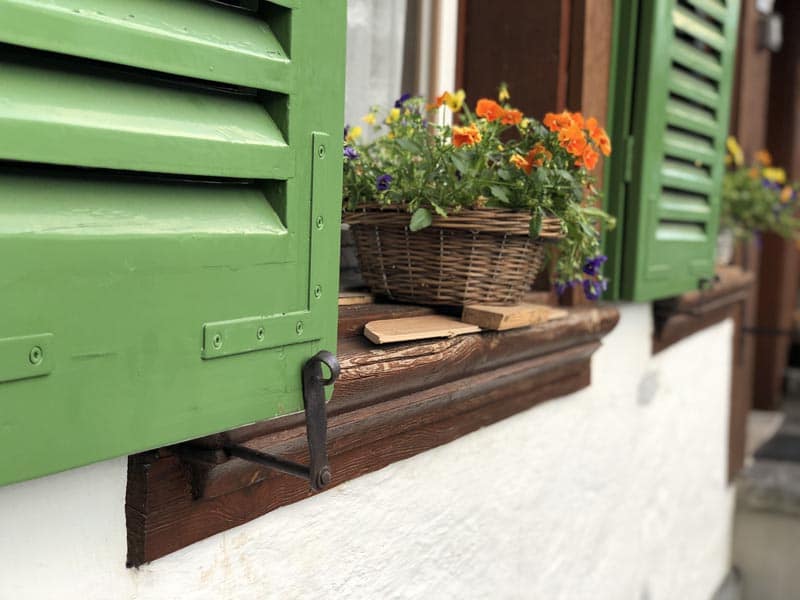
Shutter dogs should be placed horizontally about 1/4 of the width of the shutter from the outside edge of the open panel. Install the shutter dog roughly 1-1/2 inches under the shutter beneath the bottom edge to allow full rotation of the mobile head to pivot.
Occasionally, shutter tiebacks are installed incorrectly beyond the outside edge, or to the side, of the shutter panel, which diminishes the effectiveness.
Shutter dogs should be installed after the shutters have been hung on exterior hinges next to the window. Only then can the proper mounting location of the shutter hardware be identified. Hold the first shutter dog in place and measure the precise placement before drilling the first pilot hole. The opposite shutter dog installation should be the same distance from the window as the first.
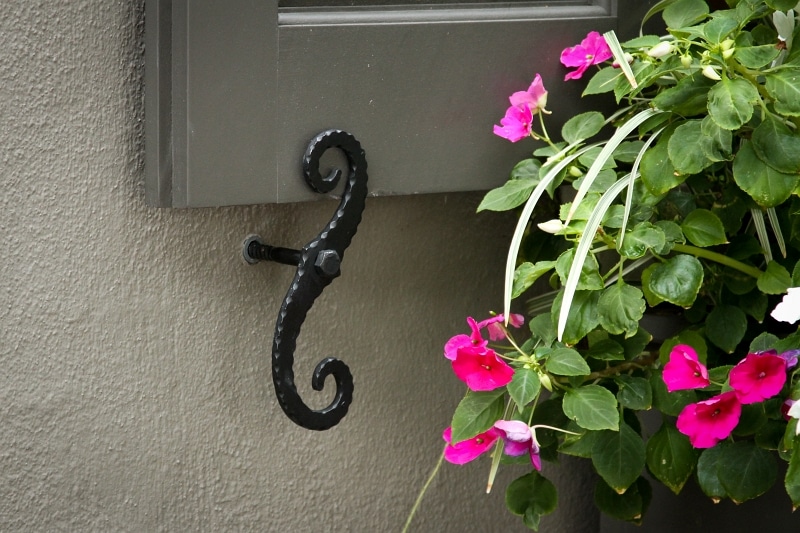
One of three different methods can be used to install shutter dogs, depending on building material and window structure. Lag-mount tiebacks are employed for most applications, which utilize a bolt through the face of the shutter dog and can adhere to hard or soft surfaces. The bolt will firmly tighten into a pre-drilled hole with a right-sized ratchet. Use the lag bolt to attach shutter dogs to brick with a hole drilled through the mortar. The hole should be slightly smaller than the bolt circumference and deep enough to accommodate most of the threads. The use of wall anchors may provide a better hold.
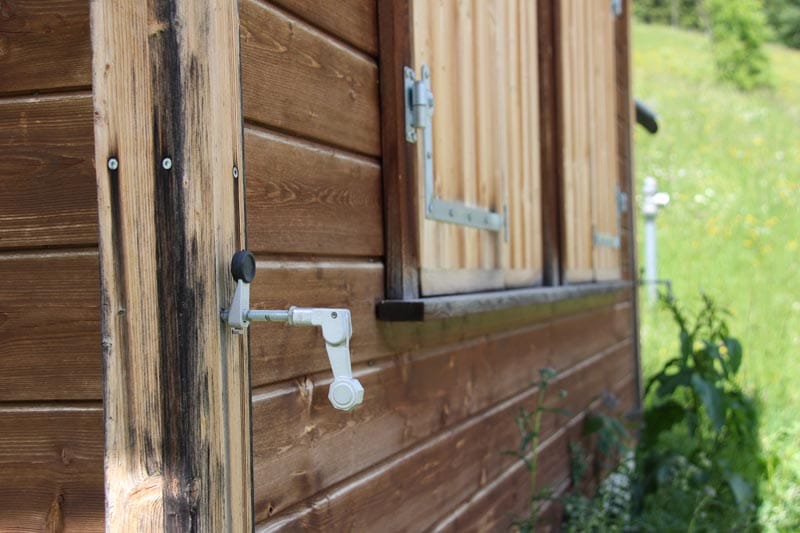
A plate-mount tieback integrates well with relatively flat wood surfaces. A flat plate at the rear of the hardware arm screws to the face of the building. You may also hear the term “post mount shutter dog” to describe this configuration.
When the first two options are not feasible, a bent arm can extend from the window casing to support the holdback. This method is particularly useful for stone, rock, or other unusual siding that prevents securing the apparatus.
Shutter dog hardware is not the only way to lock outdoor shutters in an open position. Historically, long hooks that connect to the window sill to an eye bolt in the shutter were employed. The same system is favored in some districts today.
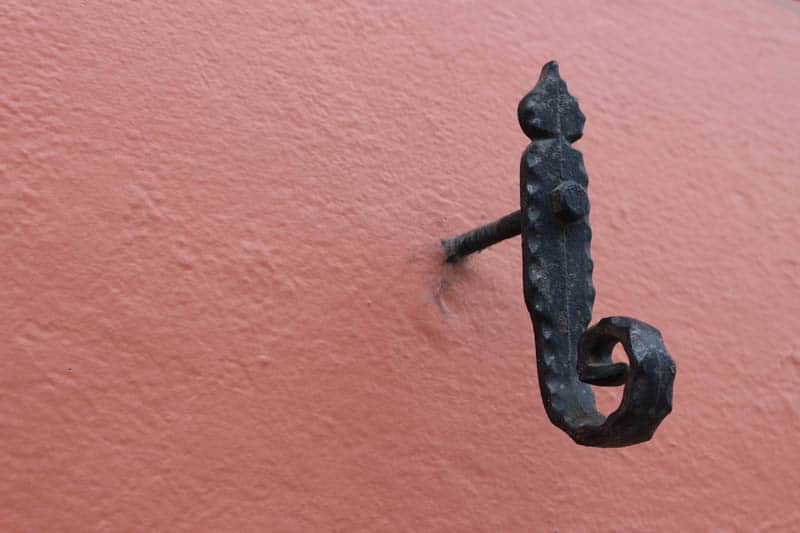
For minimal visual impact, sleek bullet catches can screw to the face of the shutter. The receiving hardware is fastened to the house, which grasps the bullet when contact is made.
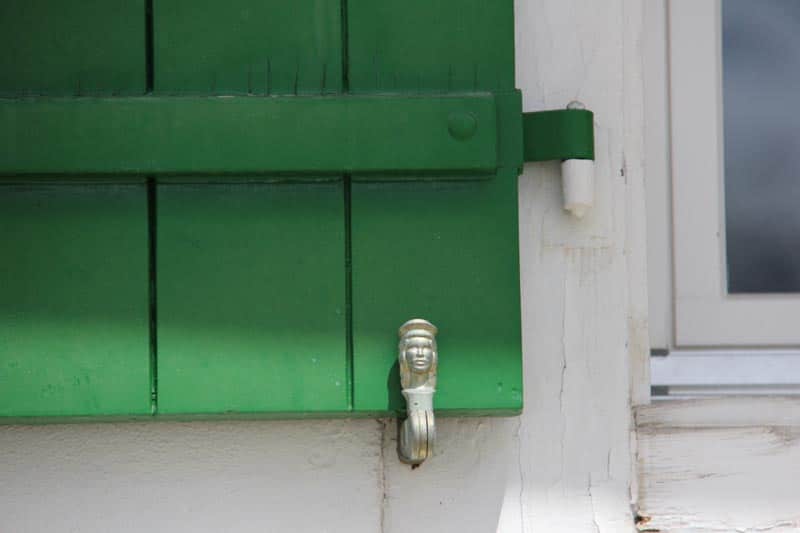
False vinyl shutter dogs are produced for exterior shutters installed in a stationary position. Most dummy tiebacks are intended for use with vinyl shutters. The faux shutter dogs can be added to enhance curb appeal but do not operate.
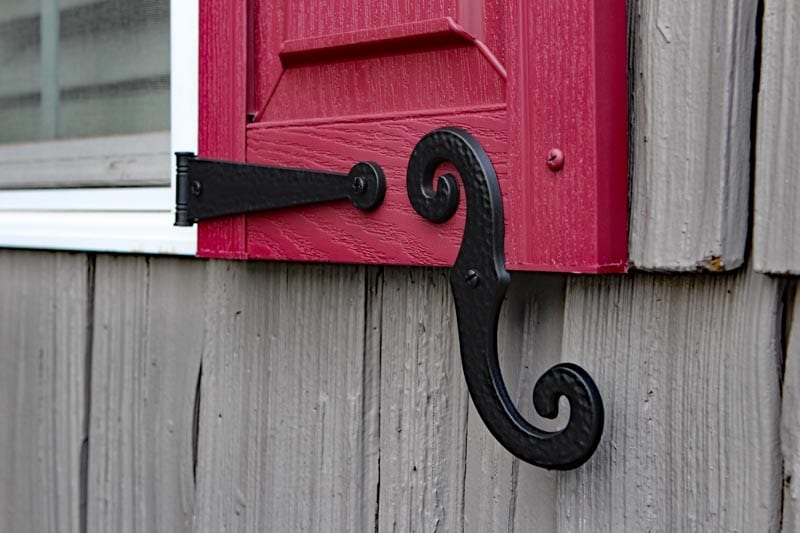
Vintage shutter dogs are on prominent display in cities like Boston (MA), Providence (RI), Philadelphia (PA), Baltimore (MD), Washington (DC), Charleston (SC), Savannah (GA), and throughout the United States.
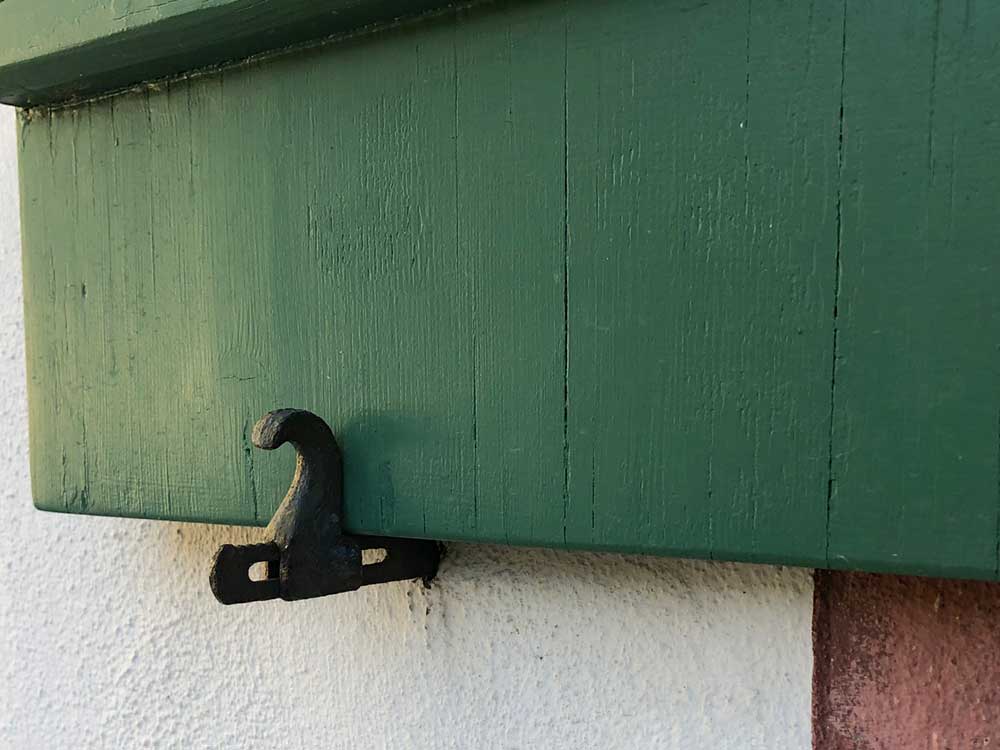
The rare wave shutter dog appears to slide to keep the shutter closed. To release the shutter the wave slides forward and pivots forward.
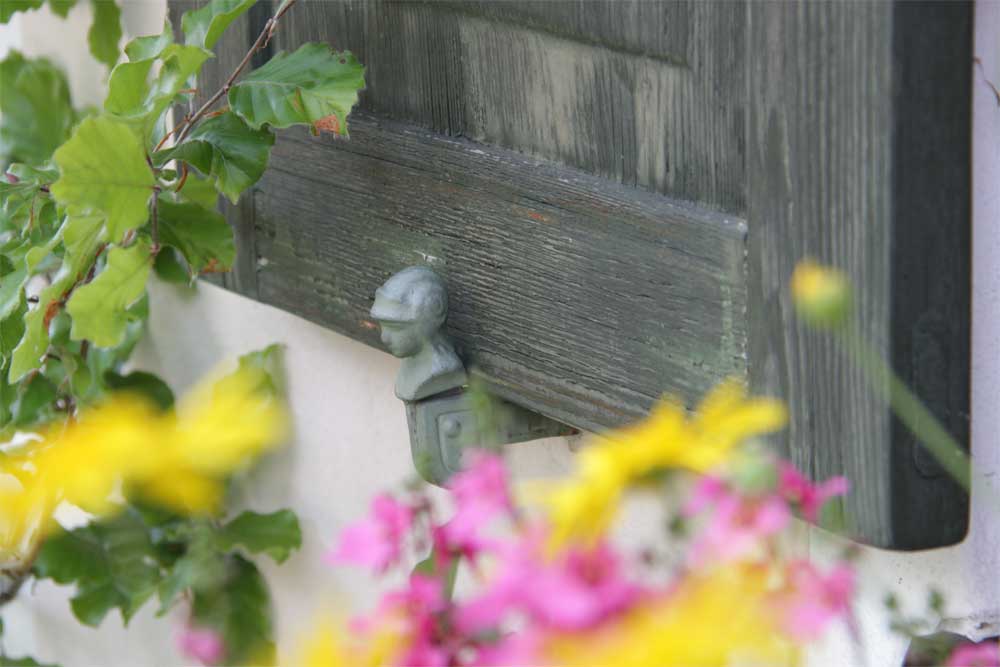
The soldier shutter tieback is unique to regions in Europe. This one was found in Austria.
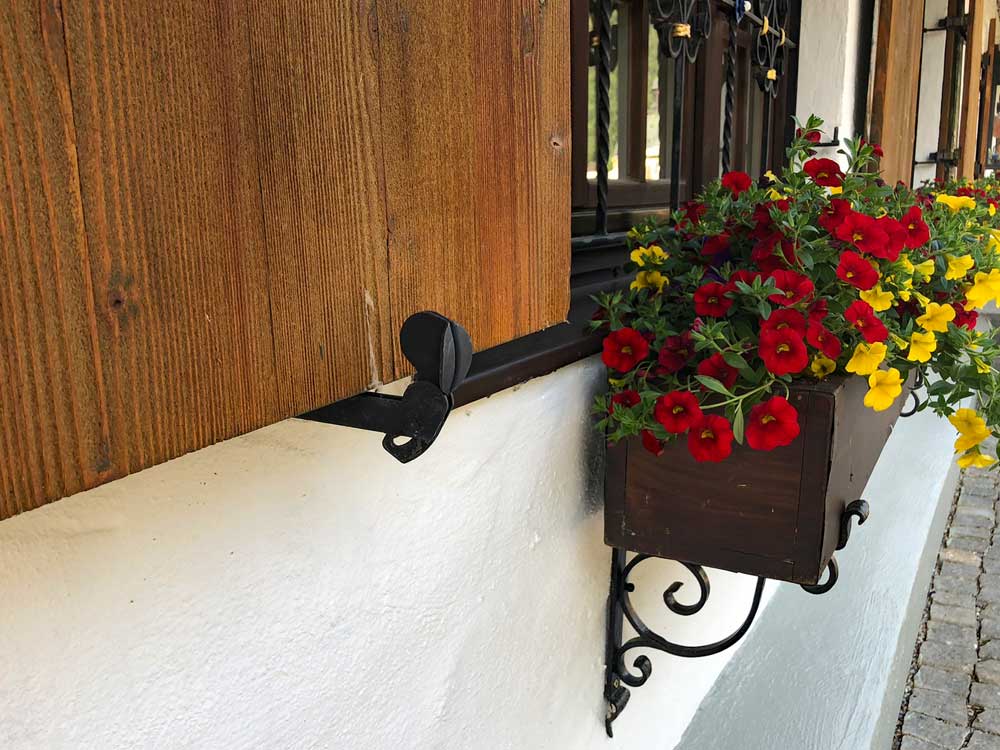
The split circle shutter dog is basic in design. It slides up and swings down to release the shutter to close.
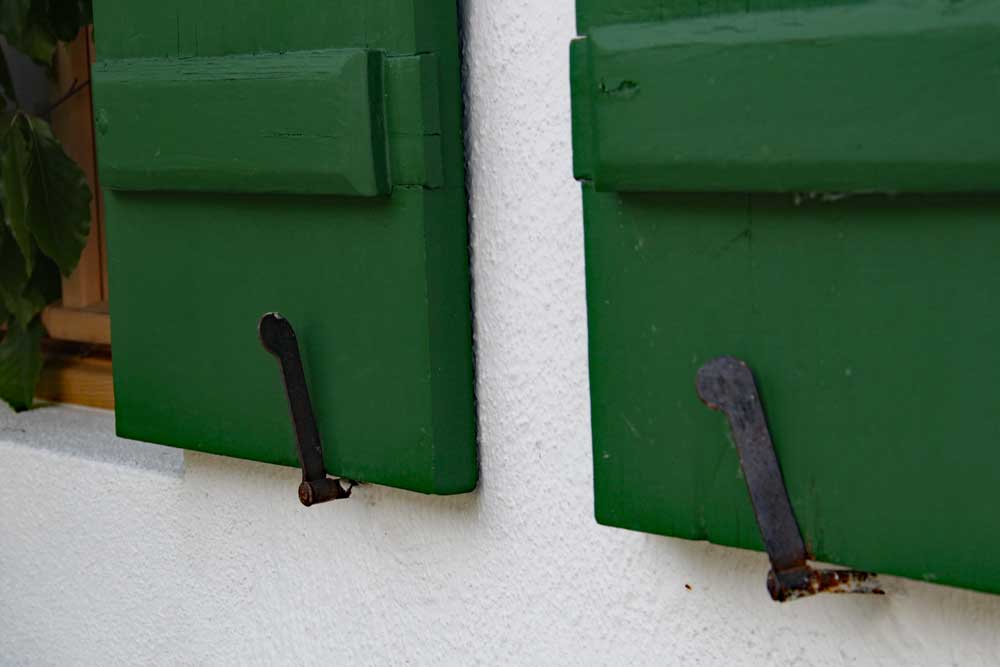
The lever-style shutter dogs require tension from the shutter to hold in position. Once in place, they are very effective.
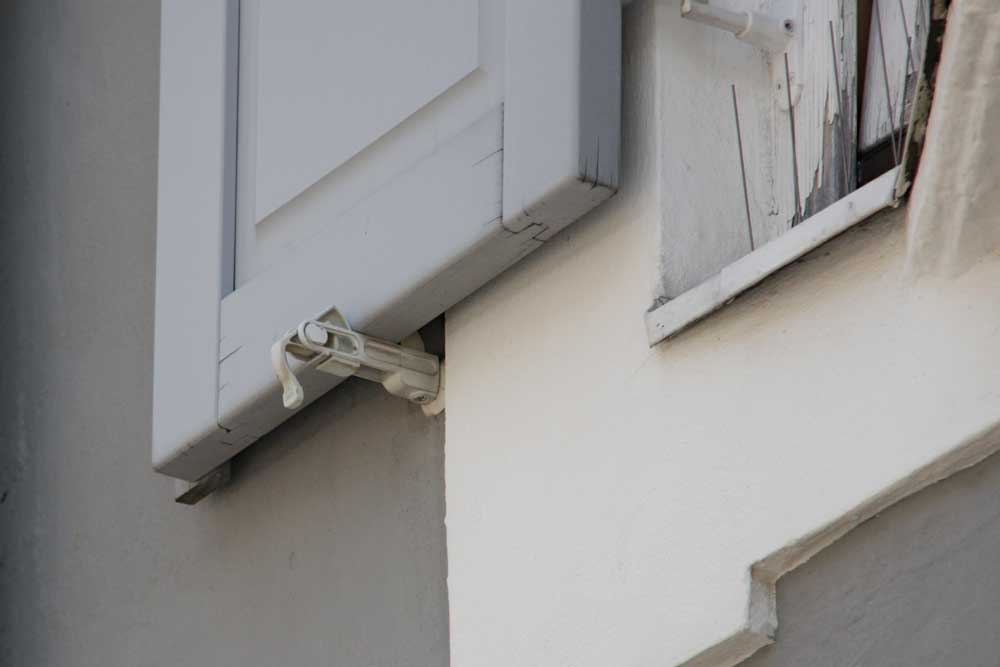
A trigger latch is nice because it automatically releases as the shutter passes over. This design makes it easy to open the shutters from the inside.
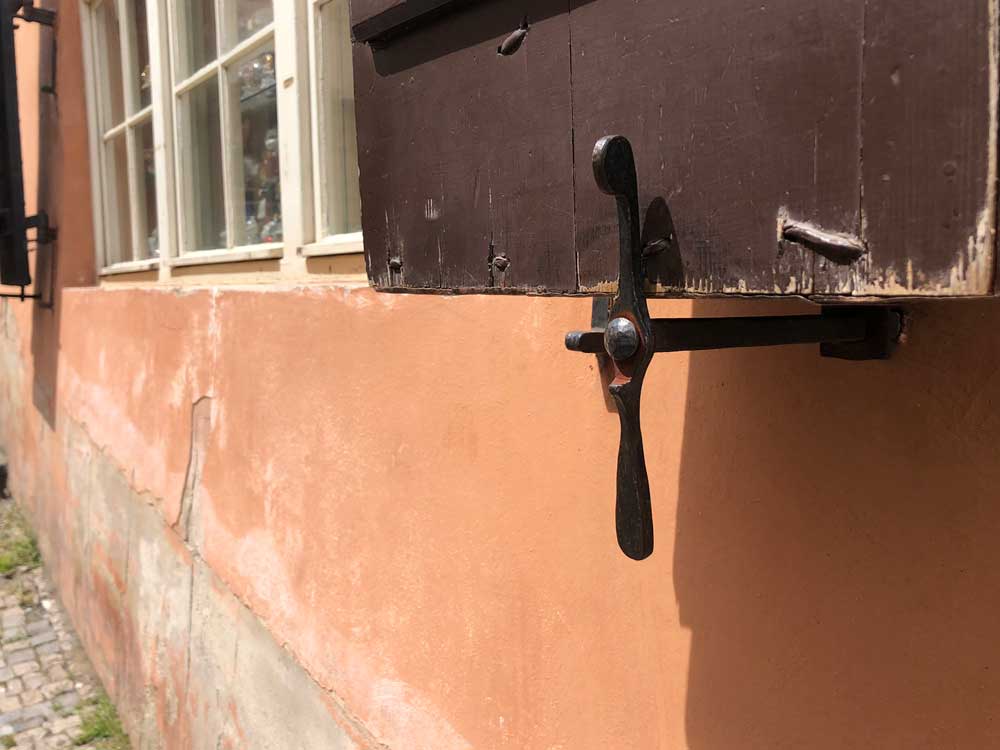
This is a modified propeller shutter dog. It has been suspended away from the building to accommodate two stacked shutters.
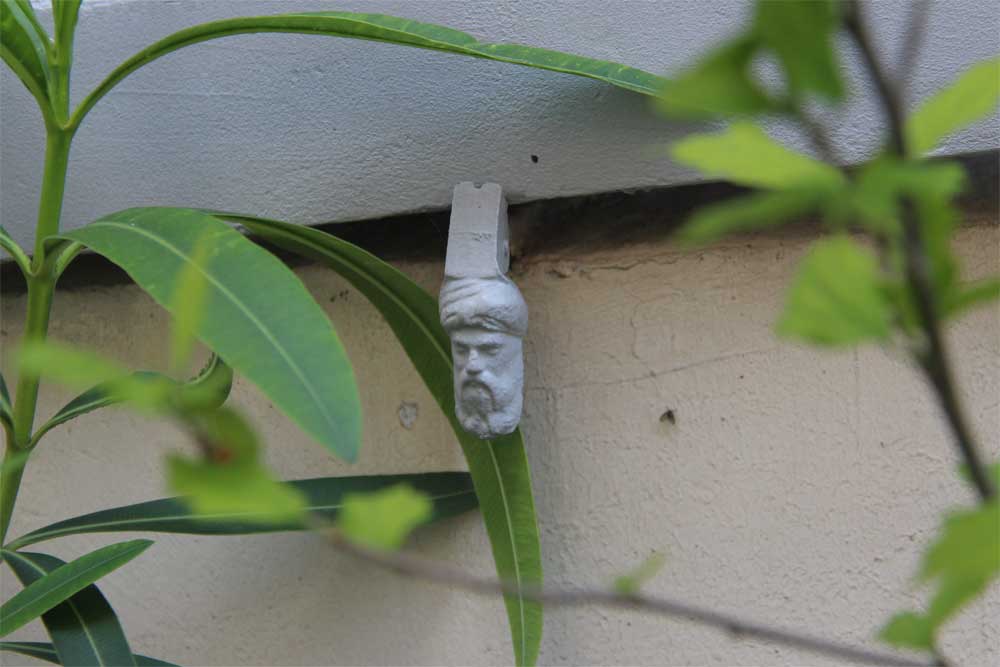
One of the most detailed and interesting antique shutter dog designs depicts a bearded man. The device is a clip that pivots up to allow for the shutter to open.
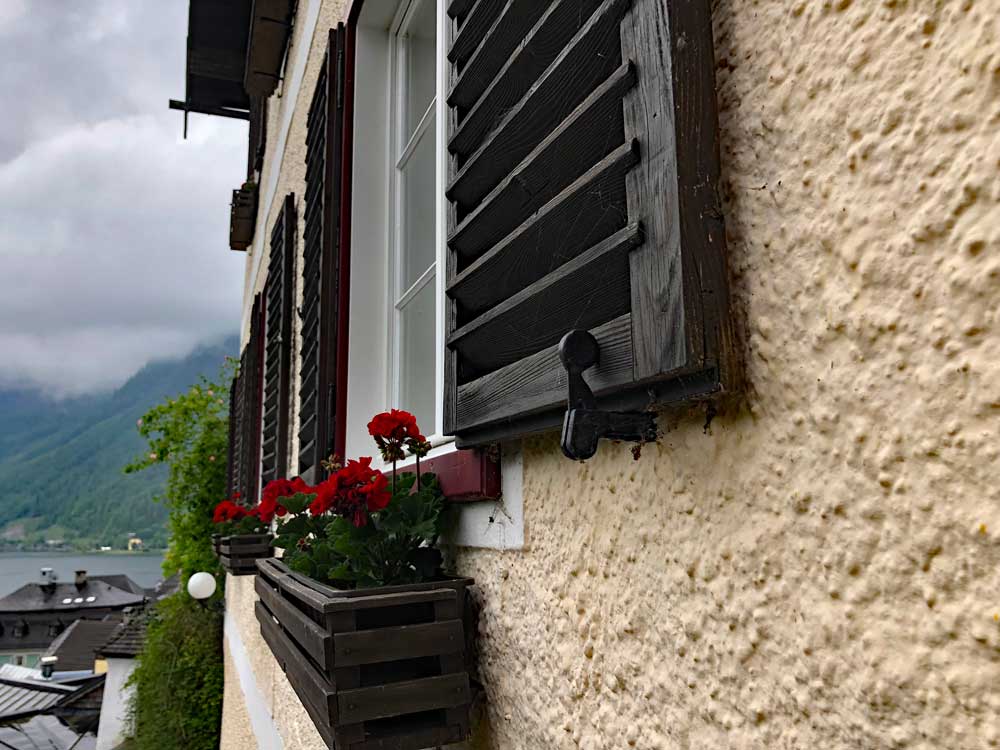
Circle drop release shutter dogs installed in Austria are a wonderful example of properly installed tiebacks.
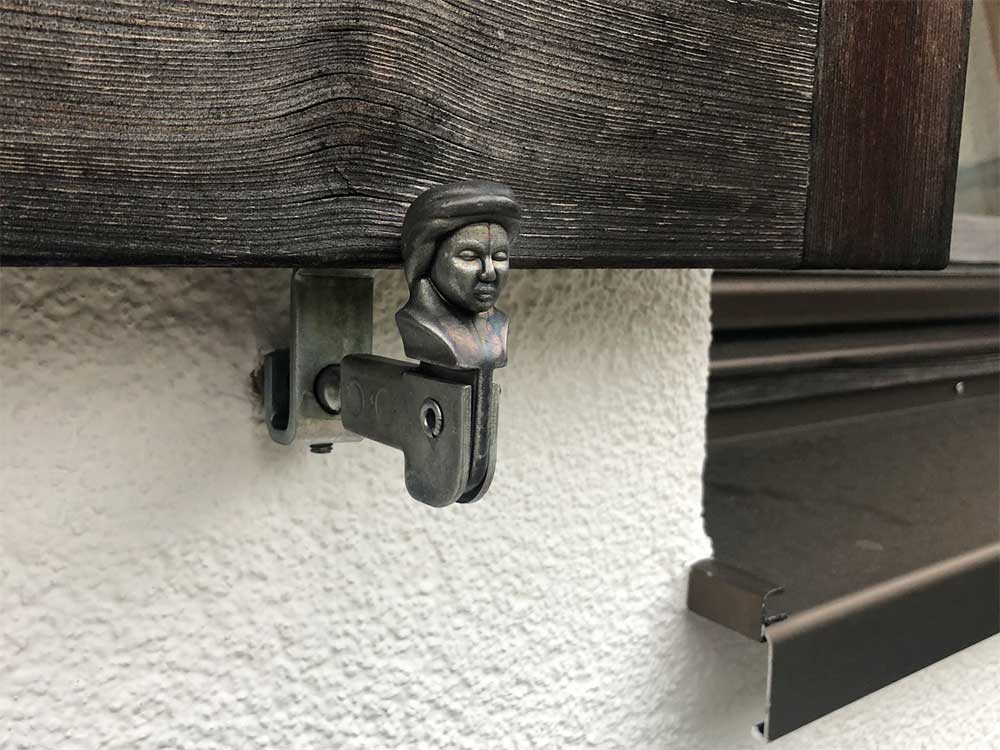
This shutter dog is shaped like a person’s head. The head drops forward to release the window shutters.
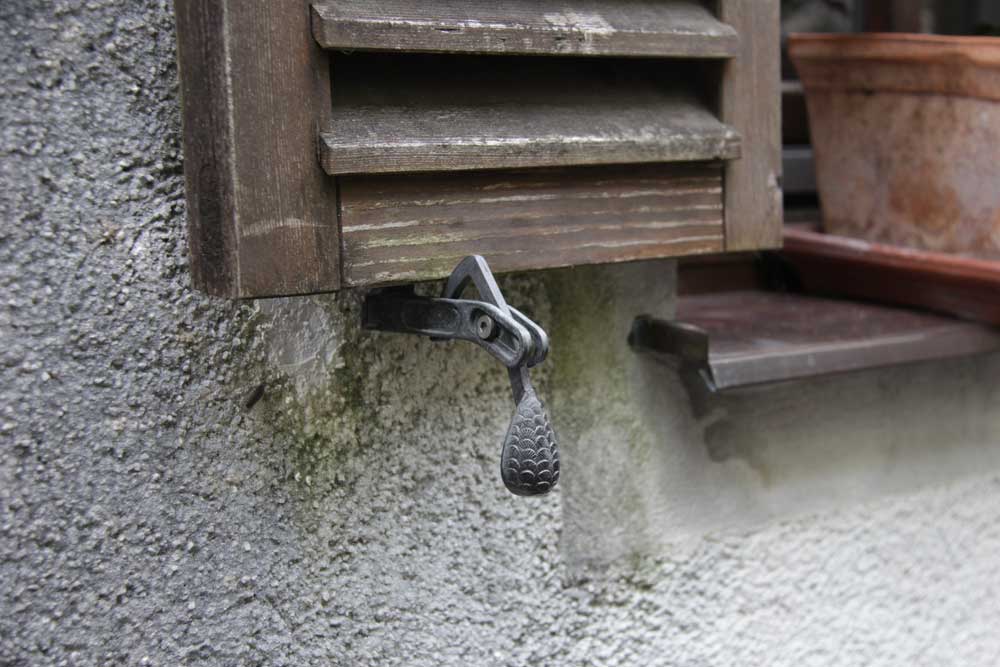
This naturally inspired pine cone or seed-shaped shutter dog holds a wood louvered shutter closed. The shutter dog lifts to free the shutter to close to provide privacy or control light.